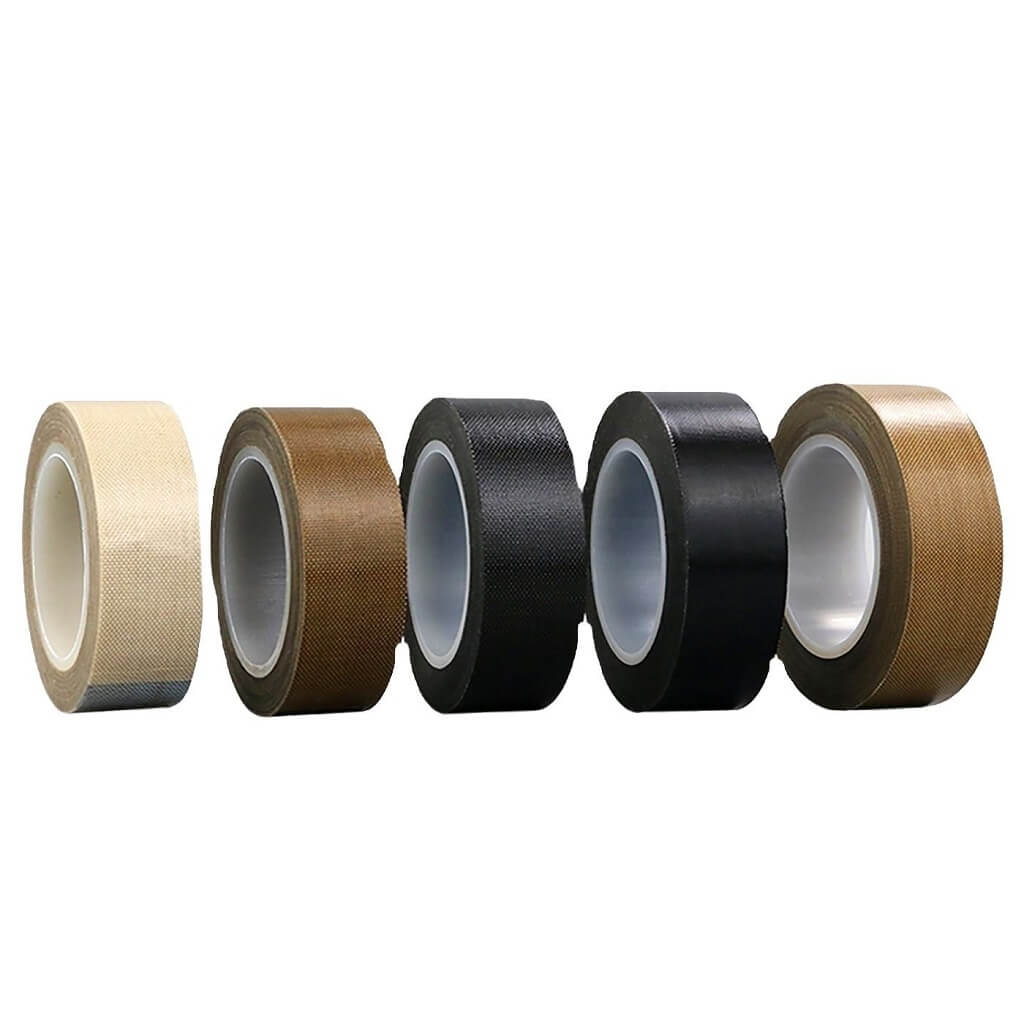PTFE color film is suitable for the insulation of electrical instruments or wires that are distinguished by color. It is a new type of C-class insulating material with excellent comprehensive performance. It is one of the indispensable and important materials in the radio industry, aviation industry, and cutting-edge science and technology. PTFE film generally uses suspension polymerized polytetrafluoroethylene resin, and the particle diameter is required to be below 150μm. Pigments must have good heat resistance (>400℃), fine particles, strong coloring power, and stability of chemical reagents.
Production Process
PTFE resin, pigment → mixing → compression molding → sintering → cooling → turning non-directional film → calendering semi-directional film

Main Process Parameters
Mixing: At present, there are two main mixing methods for producing colored PTFE films; dry mixing and wet mixing. Studies have shown that wet mixing is more uniform than dry mixing, but there are more processes, high costs, and solvents are required. In order to ensure the uniformity of products, wet mixing is generally used.
The process is to add PTFE resin and pigment to solvent → mixing → drying → solvent removal → color material.
Molded pre-forming: a reasonable selection of pre-forming unit pressure is an important process condition for producing PTFE colored film. It is mainly selected according to the resin fineness, compression ratio, pigment type fineness, and other conditions, generally, 20-40MPa.
Sintering cooling: Because the color film contains pigments, the thermal conductivity, and thermal expansion coefficient are inconsistent with PTFE. Therefore, the temperature rise and fall in the sintering process is slower than that of ordinary PTFE film, and the sintering temperature is lower than that of ordinary film. The rise and fall temperature is 20-30℃/h, and the sintering temperature is 375℃. The heating rate of ordinary film is 50-60℃/h before 327℃, 30-40℃/h after 327℃, the sintering temperature is 380℃, and the cooling rate is 20-50℃/h.
Turning non-directional film: the appropriate tooltip angle is 40°~45°, and the speed is slower than ordinary PTFE.
Calendering semi-directional film: Calendering temperature varies with film thickness, generally 5μm thick, 110℃±5℃; 30μm thick, 130℃±10℃. The rolling multiple is 215~310.
Main Equipment
- Mixing mixer;
- Hydraulic press 35~40MPa;
- Sintering furnace DL151;
- Precision CNC lathe C620;
- Calendar roller Φ100×120.

Hi! I understand this is sort of off-topic however I had to ask.
Does managing a well-established blog such as yours take a lot
of work? I’m completely new to running a blog but I do write in my diary daily.
I’d like to start a blog so I will be able to share my experience and feelings online.
Please let me know if you have any recommendations or tips for brand new aspiring
bloggers. Thankyou!
Tyskland Drakt
No matter if some one searches for his required thing, thus he/she wishes
to be available that in detail, therefore that thing is maintained over here.
Belgie Shirt
This excellent website certainly has all the information I needed about this subject
and didn’t know who to ask. Maglia Calcio Bambino
At this moment I am ready to do my breakfast, later than having my breakfast coming over again to read
other news. Maillot Bayern Munich
Wow that was strange. I just wrote an incredibly long comment but after I clicked submit my comment didn’t appear.
Grrrr… well I’m not writing all that over again. Anyway, just wanted to say excellent blog!
Fodboldtrøjer Børn
Thank you for the auspicious writeup. It in fact was a amusement
account it. Look advanced to far added agreeable
from you! However, how could we communicate?
Chelsea trøje
Hello! I know this is kinda off topic but I was wondering which blog
platform are you using for this website? I’m getting fed up of
Wordpress because I’ve had issues with hackers and I’m looking at options for
another platform. I would be fantastic if you could point
me in the direction of a good platform. Juventus trikot